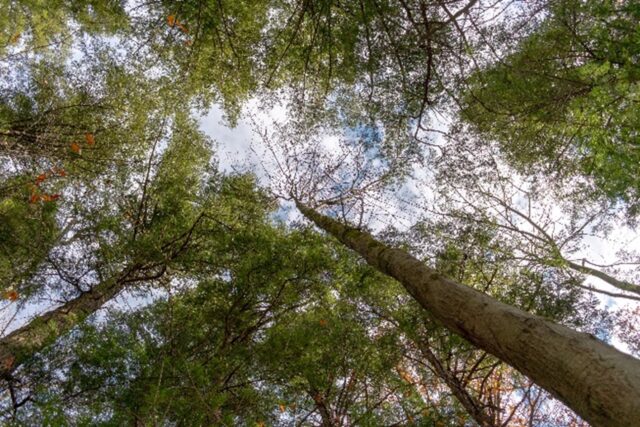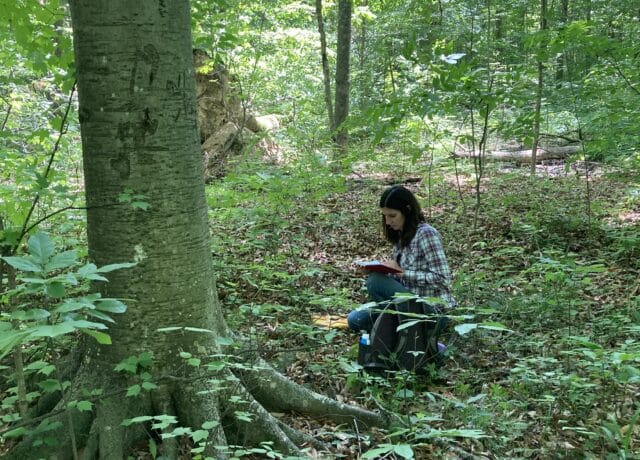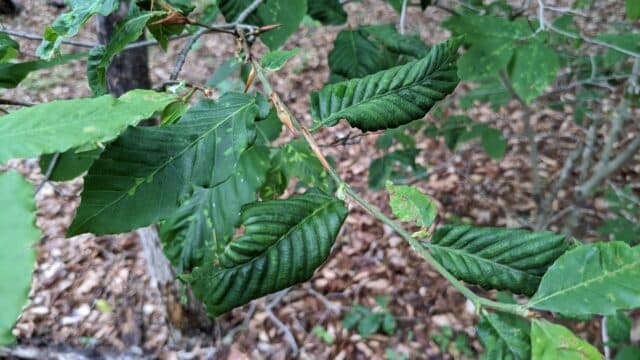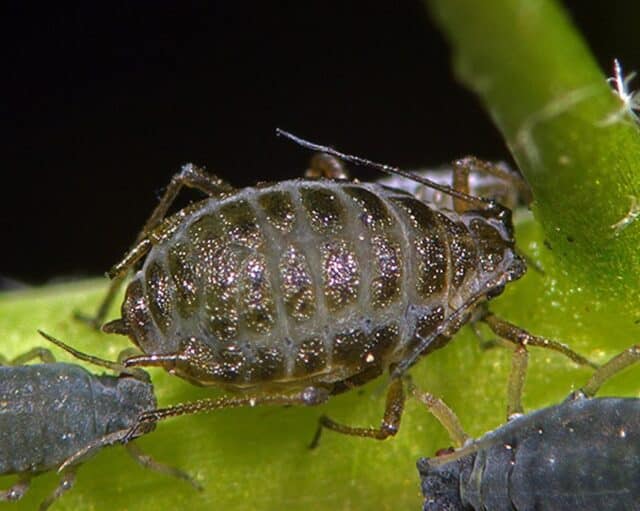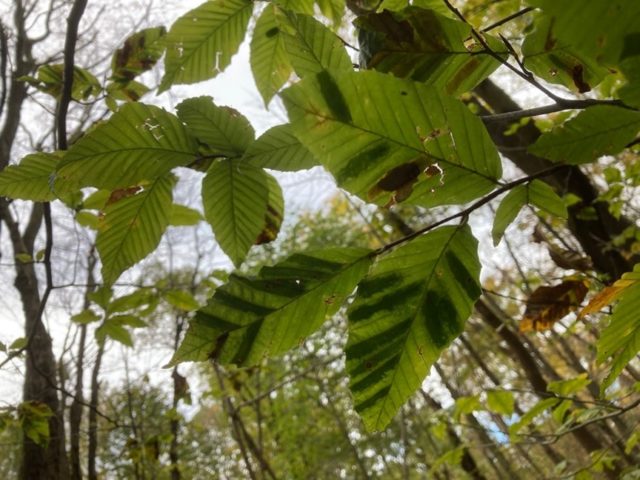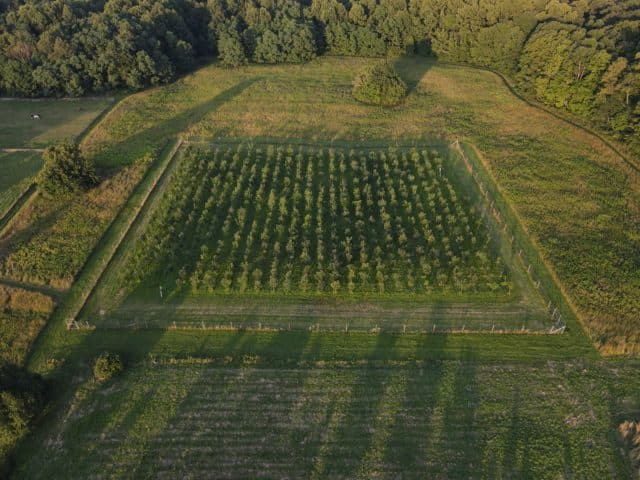
Eastern hemlock (Tsuga canadensis) is one of the most recognized trees in Northeast Ohio. Native to the eastern United States and Canada, it ranges from Nova Scotia south along the Appalachian Mountains to Alabama, and slightly westward throughout the Great Lakes region. In our area, it is often seen along wooded slopes and ravines, especially along the Chagrin River. With full, dense growth and evergreen needles, it is also popular as an ornamental landscape tree and for use as a privacy hedge.
Unfortunately, this iconic tree is under threat from an invasive pest possibly assisted by climate change. Hemlock woolly adelgid, or HWA for short, is a small insect native to Asia that was introduced into Virginia in the 1950’s. From there, the pest spread southward throughout the range, as well as to the north and northwest. While HWA has historically been reported to spread more slowly in northern climates due to colder temperatures, a trend toward very mild winters for several years may be assisting with its spread in the Great Lakes region. Within just the last few years, HWA has been recorded in southeastern, and now Northeast, Ohio. Once trees are infested, they may die within as few as four years.
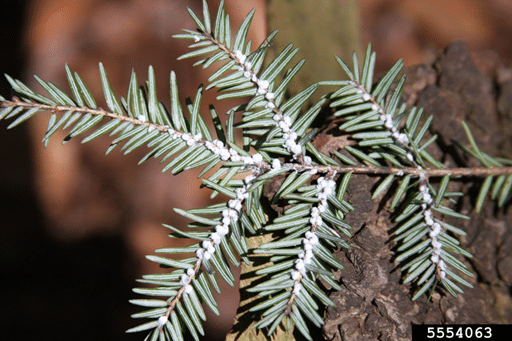
Eastern hemlock trees in our region are subject to infestation from another invasive pest, as well, the elongate hemlock scale, or EHS. While not thought to be as serious a threat to survival of the trees, EHS can be damaging, especially when simultaneous infestations with HWA occur. When diagnosing a problem, it should be noted that EHS tends to occur more on the needles while HWA occurs more at the very base of needles on the branches.
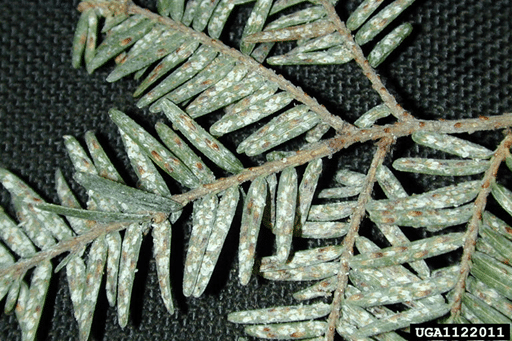
Holden Arboretum is working on a program for breeding eastern hemlock trees resistant to HWA. Hemlocks that are believed to have potential genetic resistance have been selected from stands of lingering hemlock in the eastern United States. Lingering hemlocks are those which have managed to survive the initial spread of HWA. These plants will be asexually propagated (rooted cuttings, etc.), tested for susceptibility to HWA, and established as potted trees in a greenhouse where plants will be grown in such a way to encourage these potted plants to produce pollen and cones at a very early age (2-5 years rather than the more typical 30 years).

To determine susceptibility, or potential resistance, to HWA, two field sites have been laid out to screen populations propagated from lingering hemlock, including one site at Holden Arboretum and one at Saint John of the Cross Catholic Parish, in Euclid, Ohio. These sites have HWA present and make for ideal locations to monitor natural colonization of the plants by HWA.
What we know so far regarding HWA in Northeast Ohio, is that it is present, but very sporadic. We could use your help to track the spread of HWA and document its impact in our area. This will additionally help in mitigating the continued spread. So far, we have seen HWA at more developed and urban sites in our area, possibly due to spread on landscape trees and deer. For this reason, a survey is very useful to help us know what is happening on private property that is otherwise inaccessible to Holden Forests and Gardens. Your voluntary completion of the survey at the link below would be appreciated. If you have any questions, please feel free to reach out to David Burke or Danny Dlugos. Thank you. Complete the survey here.

Danny Dlugos, PhD
Senior Research Specialist - Plant Breeding
My expertise is in the management of plant diseases, and I am trained in disease diagnostics. I am interested and experienced across plant topics of regulatory significance including plant diseases, plant pests, and invasive plant species. Currently, I am working on a plant breeding program for eastern hemlock, Tsuga canadensis, and resistance to the invasive pest, hemlock woolly adelgid (HWA).
